Vaillantella maassi
Fork-tailed Loach
SynonymsTop ↑
Vaillantella flavofasciata Tweedie, 1956
Classification
Order: Cypriniformes Family: Vaillantellidae
Distribution
Described from the Kampar Kiri River system, central Sumatra, Indonesia and since recorded from the Batang Hari drainage a little further south on the island, plus the Kapuas River basin in West Kalimantan province, Indonesian Borneo, and streams flowing into Kalimantan from the neighbouring Malaysian state of Sarawak.
Populations from the Endau and Terengganu rivers, Peninsular Malaysia were initially described as V. flavofasciata by Tweedie (1956) but are currently considered to represent V. maassi as are those inhabiting the Tapi and Saiburi rivers in southern (peninsular) Thailand.
There also exists at least one record from Chanthaburi province, eastern Thailand, but as far as we know the species‘ presence there remains unconfirmed in terms of recent collections.
Habitat
Most commonly found in relatively shallow, marginal sections of forest streams. Many of these are associated with ancient peat swamps and contain black water although it’s also found in clear to turbid waters which may or may not be tannin-stained to some extent.
Such habitats are typically shaded from the sun by marginal vegetation and the dense tree canopy above.
The water generally has a negligible dissolved mineral content, is poorly buffered and pH can be as low as 3.0 or 4.0 due to the gradual release of tannins and organic acids from decaying plant material.
Depending on locality the substrate may be composed of peat, mud or sand with the fish typically inhabiting piles of leaf litter. Water flow can vary depending on the time of year and may move quite swiftly during rainy periods or in higher altitude environments.
V. maassi occurs sympatrically with a number of other species across its range and at one location in Sarawak, close to the border with West Kalimantan, it was recorded alongside Pangio shelfordii, ‘Puntius‘ kuchingensis, Rasbora caudimaculata, R. cf. tuberculata, Oxygaster anomalura, and the pipefish Doryichthys martensii.
Roberts (1989) stated that both V. maassi and its congener V. euepiptera occur in the Kapuas River system but that the former is restricted to higher altitude habitats than the latter.
Maximum Standard Length
100 – 125 mm.
Aquarium SizeTop ↑
Minimum base dimensions of 120 ∗ 30 cm or equivalent are recommended although a single specimen could be housed in something smaller.
Maintenance
If the intention is to keep more than a single specimen the hard décor should be arranged in such a way that each fish can form its own territory (see ‘Behaviour and Compatability’).
Ideally use a soft, sandy substrate since this species likes to dig and may spend some of its time completely buried, although fine gravel can provide an acceptable alternative.
Some driftwood roots and branches placed so that plenty of shady spots are formed can be used to add structure to the display and addition of dried leaf litter (beech, oak or Ketapang almond leaves are all suitable and a mixture of all three looks very effective) would further emphasise the natural feel.
The latter not only provides cover for the fish but facilitates development of microbe colonies as decomposition occurs.
These tiny organisms can provide a valuable secondary food source whilst the tannins and other chemicals released by the decaying leaves are thought beneficial for blackwater fish species.
Fairly dim lighting is also preferable. You could add some aquatic plants that can survive under such conditions such as Microsorum, Taxiphyllum or Cryptocoryne spp. A few patches of floating vegetation to diffuse the light entering the tank would also be useful.
High flow rates are best avoided meaning gentle filtration providing a little surface agitation is adequate. Ensure that small specimens are unable to enter filter intakes and cover the tank well as most loaches do jump at times, especially when introduced to a new environment.
Water Conditions
Temperature: 23 – 29 °C
pH: 3.5 – 7.2
Hardness: 18 – 215 ppm
Diet
Essentially a micropredator which in nature extracts insect larvae, small crustaceans and suchlike from the substrate, and though it will usually learn to accept good quality sinking pellets or flake in captivity it may not show interest in such products immediately post import or introduction to a new tank.
Offer small live and frozen fare such as Daphnia, Artemia, bloodworm, etc., during this initial period, introducing dried foods as the fish become settled.
A varied diet is key to maintaining it in the best of health so a combination of all the above is an ideal long-term solution, with home-made, gel-based foods containing a mixture of natural ingredients also highly recommended.
Behaviour and CompatibilityTop ↑
Among the more reclusive loaches and will rarely be seen during daylight hours.
Fishes from similar environments that occupy the upper part of the water column such as Trichopodus, Trichogaster, Trichopsis, and Sphaerichthys plus many small cyprinids, should make ideal companions.
Benthic tankmates should be chosen with care, however, since Vaillantella spp. can be aggressive both with one another and other fishes, and may also prey on eggs or fry.
Individuals tend to form small, typically 10-15 cm diameter, territories centred around a particular hiding place which are defended aggressively against intruders.
Once tankmates learn to avoid these there is usually no problem but less robust species are perhaps best omitted. Proper research will help you make the right choices.
Sexual Dimorphism
Adult females are likely to be noticeably thicker-bodied and probably larger than males, but no other external differences have been reported as far as we know.
Reproduction
Unreported in aquaria and little-to-nothing is known of this species‘ natural life history.
NotesTop ↑
This species is traded under various names including ‘chocolate scissor-tailed loach’, chocolate long-finned loach’, ‘red line cobra loach’, ‘spiny eel loach’ and ‘dragon loach’.
It’s apparently difficult to find in its natural habitats and thus time-consuming to collect, meaning it’s rarely traded in numbers, sought after by enthusiasts and tends to carry a relatively high price tag when available.
The genus currently contains just three species, and V. maassi can be told apart from the congeners V. cinnamomea and V. euepiptera by a combination of characters including: colour pattern consisting of bluish-brown body with a well-defined orange to yellow stripe extending along the dorsal surface from the tip of the snout to the base of the caudal-fin; 13-17 (given as 16½ in Kottelat, 1994) total anal-fin rays; 61-74 (73½) total dorsal-fin rays; 57-60 vertebrae.
In V. euepiptera colour patterning is similar but the dorsal stripe is paler and normally broken up, forming a series of irregular blotches, there are 7-10 (9½ in Kottelat, 1994) anal-fin rays, 58-65 (64½) dorsal-fin rays and 52-54 vertebrae.
The colour pattern of V. cinnamomea is relatively uniform and brownish with no conspicuous dorsal patterning and it possesses 10 (9½) anal-fin rays, 57-60 (59½) dorsal-fin rays and 51-52 vertebrae.
All three species appear to have been in the aquarium trade, albeit in limited numbers.
Vaillantella primarily differs from other loach genera by possession of a notably longer dorsal-fin with 52-73 branched rays (the maximum in other genera is 28 branched dorsal rays) and the genus has a somewhat confused taxonomic history.
V. euepiptera, the type species, was initially described as a Nemacheilus by Vaillant (1902) but in 1977 Nalbant and Bãnãrescu assigned members to their new subfamily Vaillantellinae within the family Cobitidae based on morphological characters.
Later authors (e.g., Roberts, 1989; Kottelat, 1994) placed the genus in the subfamily Nemacheilinae although Nalbant (2002) preferred to include Vaillantellinae alongside Botiinae as a subfamily of the newly-erected family Botiidae due to a series of shared features including barbel arrangement, complete lateral line, forked caudal-fin and gas bladder structure.
However, Kottelat (2004) subsequently demonstrated that both barbel and lateral line structure of Vaillantella spp. more closely resemble those seen in members of Nemacheilidae than Botiidae and that the genus lacks a suborbital spine therefore should not be included in the latter.
The phylogenetic position of Vaillentella thus remained unclear until Šlechtová et al. (2007) revealed it to represent a distinct genetic lineage and therefore warrant its own family.
This has since been referred to as Vaillantellidae and among other loach groups it’s most closely-related to Botiidae and Cobitiidae, respectively.
Thanks to Mike Vulis.
References
- Kottelat, M., 1994 - Japanese Journal of Ichthyology 40(4): 427-431
Vaillantella cinnamomea, a new species of balitorid loach from eastern Borneo. - Kottelat, M., 2004 - Zootaxa 401: 1-18
Botia kubotai, a new species of loach (Teleostei: Cobitidae) from the Ataran River basin (Myanmar), with comments on botiine nomenclature and diagnosis of a new genus. - Kottelat, M., 2012 - Raffles Bulletin of Zoology Supplement 26: 1-199
Conspectus cobitidum: an inventory of the loaches of the world (Teleostei: Cypriniformes: Cobitoidei). - Lim, K. K. P., 1993 - Raffles Bulletin of Zoology 41(1): 113-118
A new record of Vaillantella euepiptera (Pisces: Osteichthyes: Balitoridae) from the Malay Peninsula. - Nalbant, T. T., 2002 - Travaux du Museum d'Histoire Naturelle : 309-333
Vaillantellinae, a new sub-family of Cobitidae (Pisces, Cypriniformes). - Nalbant, T. T., 2004 - Travaux du Museum d'Histoire Naturelle : 269-277
Hymenphysa, Hymenophysa, Syncrossus, Chromobotia and other problems in the systematics of Botiidae. A reply to Maurice Kottelat. - Nalbant, T. T. and P. M. Bãnãrescu, 1977 - Zoologische Mededelingen 52(8): 99-105
Vaillantellinae, a new sub-family of Cobitidae (Pisces, Cypriniformes). - Ng, H. H. and H. H. Tan, 1999 - Zoological Studies 38(3): 350-366
The fishes of the Endau drainage, Peninsular Malaysia with descriptions of two new species of catfishes (Teleostei: Akysidae, Bagridae). - Roberts, T. R., 1989 - Memoirs of the California Academy of Sciences 14: i-xii + 1-210
The freshwater fishes of Western Borneo (Kalimantan Barat, Indonesia). - Tweedie, M. W. F., 1956 - Bulletin of the Raffles Museum 27: 56-64
Notes on Malayan fresh-water fishes Nos. 6-8. - Šlechtová, V., J. Bohlen, and H. H. Tan, 2007 - Molecular Phylogenetics and Evolution 44(3): 1358-1365
Families of Cobitoidea (Teleostei; Cypriniformes) as revealed from nuclear genetic data and the position of the mysterious genera Barbucca, Psilorhynchus, Serpenticobitis and Vaillantella.



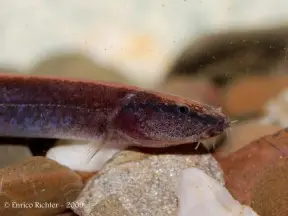
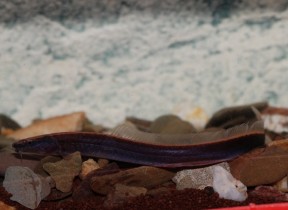
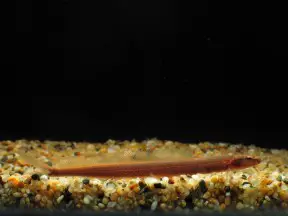
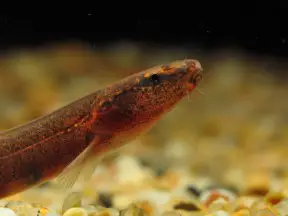
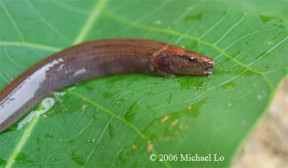

December 12th, 2012 at 6:15 pm
Matt,
where does the information about their behavior is coming from? I’ve been keeping them for five years, and the fish is highly territorial, they defend their hiding places and attack other fish that infringes! They would definitely attack another maassi, usually would attack pangios (but pangios in the tank learned long ago not to infringe), I’ve even seen them attacking cories that come too close. And they bit cories a couple of times too.
“will often pack themselves into a single nook” seems like a total impossibility, unless this is about newly moved stressed fish.
The recommended tank dimensions btw are imho correct for a small group, but if the fish was social like pangios, such a large tank would not be needed… they are not!
The part about eating fry seems accurate, cory fry in the tank does not survive, and there are no other suspects. I think they eat young shrimp too.
December 12th, 2012 at 8:16 pm
To be honest Mike yours is the first documented account of keeping it over the long term I’ve seen.
We had them in at the shop I used to work in once and they all jammed themselves under the filter and single bit of bogwood in the tank. Suppose this could just have easily been because of the number of fish and lack of cover as opposed to a peaceable nature but had nothing else to base an opinion on!
How large a territory does each fish require then? What would be your minimum tank size recommendations for a single specimen and small group, respectively?
You say the pangios learned not to go near the Vaillantella so guessing you left them in and it can be kept in a community if chosen properly?
December 13th, 2012 at 7:18 am
Right, you had new stressed fish that just wanted to hide and did not care about privacy. Established fish behaves differently.
Your recommendation is correct for a small group. I had 6 in a 55g tank (this is precisely the footprint you suggest, 48*12) and this seems appropriate. Not sure btw how many I have now… one died, two definitely alive, but the remaining three have their territories on the back side of the tank… they were ok during the summer but I cannot see them unless I move things around!
I’m not sure what is the worst hiding loach…either them or sinibotia…
Any recommendation you make should perhaps say that each fish should be able to have a proper individual hiding place.
I’d think 5g is sufficient for a single specimen.
I guess we have no info on the lifespan?
How large: perhaps radius of 5″ or so… maybe less if there is no direct line of sight? Obviously the more complicated is the landscape the more you can fit in.
Yes, pangios are fine. I have p.myersi and p.pulla (possibly incorrect id) with them. I see no problems: Pangios are smart, they somehow know where maassi’s are hiding and don’t come close; cories don’t have the sense and I’ve seen maassi’s striking at them (think about a snake striking—the same motion). Very rare sight but very impressive! I saw some bite damage but nobody got killed. I never saw maassis attacking otos or l.guntea (also in the tank).
one more thing about the profile: 0ppm makes me wonder…i don’t think any fish would survive in distilled water?
December 13th, 2012 at 9:54 am
Hi Mike, thanks for that! I’ve made some changes – how does it read now?
Also another question. Have you ever observed the behaviour described in the last paragraph of the ‘Behaviour and Compatability’ section?
December 13th, 2012 at 3:51 pm
Much better! I’d not go as far as you did with avoiding Corydoras… IME nobody got really hurt or killed, the cories in the tank (c.panda and c.metae) do fine and breed regularly… imho saying “v.maassi may chase other bottom fish from their territories” is sufficient.
I never saw anything that may be related to breeding (and I watched for that for a long time before giving up!). But then I do not know the sexes of mine. And i never saw a gravid female like one sees with pangios — either i don’t have females or they do not differ in body shape enough.
And I saw no benefit of having dither fish with them either.
December 13th, 2012 at 6:51 pm
Sorry for the piecemeal post, but just to clarify this a bit.
No point to specifically list cories as unsuitable also because we don’t know how maassi’s would relate to other fish. For example, I’m thinking of putting some garras into the tank (after 6 years the number of otos decreased 🙁 )… I think they will be ok, but I don’t know!
And I think that actually pangios may be in more danger than any other fish. I never had a suspicious death of a cory (the only cory death in the last 3 or 4 years was from clearly a disease).. but I did have a suspicious kuhli death this summer (I moved a kuhli, healthy, from another tank and two days later it was dead, in front of one of the maassi’s openings.) Not enough to jump to conclusions here or make recommendations, but it may be that I’m getting away with maassi/pangio mix and another person will see a disaster.
Not trying to confuse you!
December 13th, 2012 at 7:45 pm
Aaaaaaaaaaaaaaaaaaaaa!!!
Just kidding. 😀 Have another read and let me know what you think.
December 13th, 2012 at 9:16 pm
Looks good!
Let me check old photos, perhaps I have something that can be useful.
December 14th, 2012 at 9:35 am
Would be great. 🙂